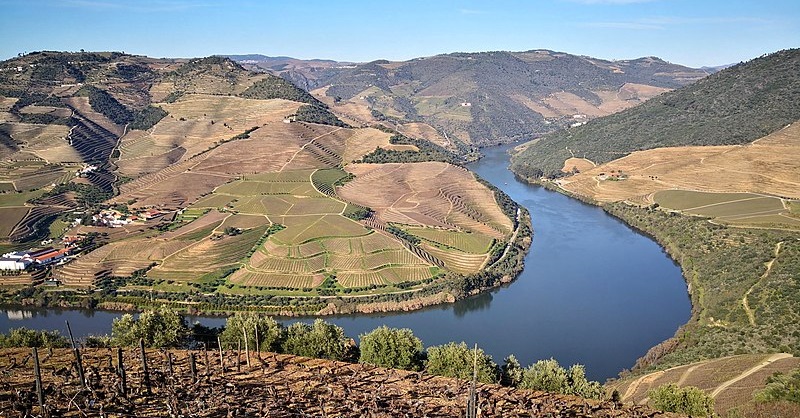The Duero (Duoro) Valley
The Duero river (Douro in Portugal) is 765 km (475 miles) long.
It starts in the Sierra de Urbión mountains south of Rioja, and flows across Spain, and forms a part the Spanish-Portuguese border, before it flows across Portugal to the Atlantic Ocean at Pôrto.
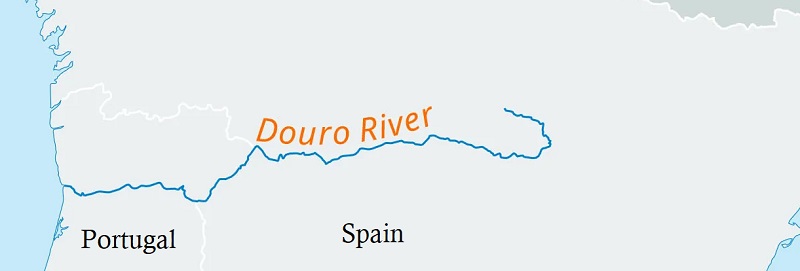
Along its path through Spain, Duero passes through several key DO (Denominación de Origen) wine regions that are important to Spanish wine production:
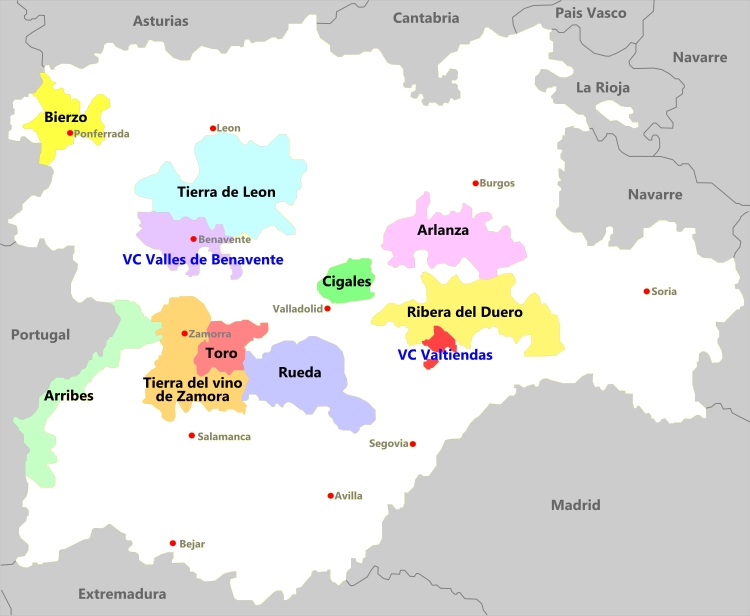
Wine Regions Castilla y León. Source: http://www.wineandvinesearch.com/.
DO Ribera del Duero
Location: Castilla y León region, spanning provinces like Burgos, Valladolid, Soria, and Segovia.
Style: Predominantly red wines, particularly from Tempranillo (locally called Tinta del País or Tinto Fino).
Character: Powerful, structured reds with deep color, ripe fruit, and aging potential.
Reputation: One of Spain’s most prestigious wine regions, home to iconic producers like Vega Sicilia and Dominio de Pingus.
DO Rueda
Location: Just to the west of Ribera del Duero, also in Castilla y León.
Style: Primarily white wines, most famously from the Verdejo grape.
Character: Fresh, aromatic, and vibrant whites with herbal and citrus notes.
Notes: Also produces some Sauvignon Blanc and red wines, but Verdejo dominates.
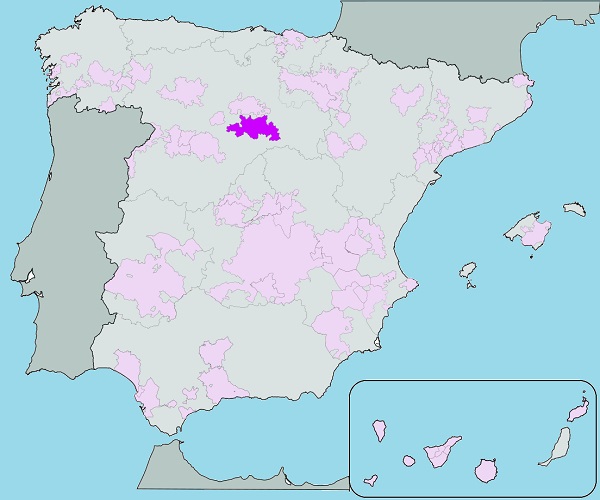
DO Ribera |
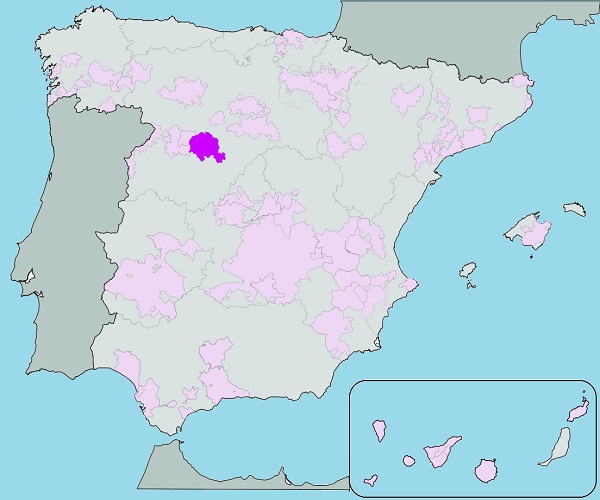
DO Rueda |
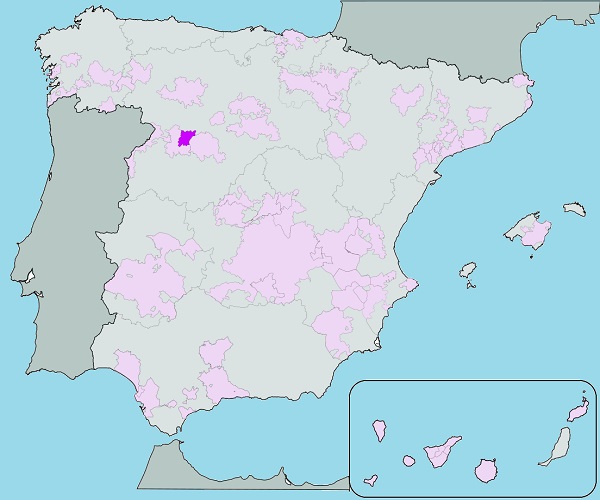
DO Toro |
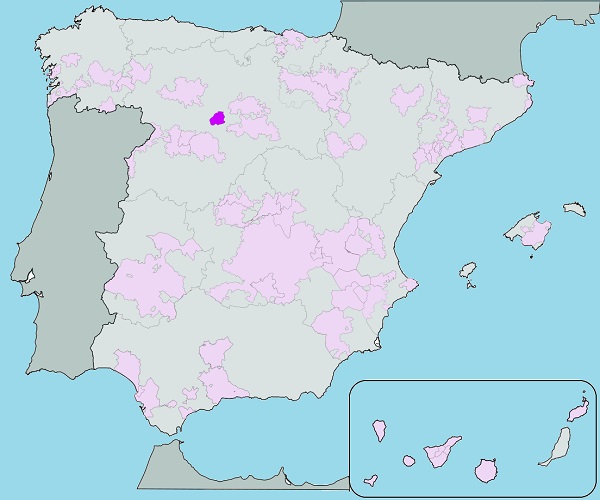
DO Cigales |
DO Toro
Location: Further west along the Duero River, in the province of Zamora.
Style: Bold, full-bodied red wines made from Tinta de Toro (a local clone of Tempranillo).
Character: Rich, concentrated, often high in alcohol and tannin.
Reputation: An ancient wine region with modern revival; home to respected producers like Numanthia and Teso La Monja.
DO Cigales
Location: North of Valladolid, near the river’s path.
Style: Known historically for rosé (rosado) wines, now also producing reds and some whites.
Grapes: Mostly Tempranillo, Garnacha, and Verdejo.
Character: Fruity and floral rosés; increasingly serious red wines with good balance.
DO Arribes
Location: In the far west of Spain, on the border with Portugal.
Style: Produces reds, whites, and rosés.
Grapes: Local varieties like Juan García, Rufete, and Tempranillo.
Character: Distinctive, often rustic wines with a strong sense of terroir.
Note: One of the newer and less-known DOs, with a focus on sustainable viticulture.
DO Ribera del Duero
Ribera del Duero (Banks of Duero) is one of Spain's top red wine regions.
The region attracts wine-lovers from around the globe with red Ribera del Duero wines made from the Tinto Fino (Tempranillo) grape. A small amount of rosado wine is also made in the region.
The vineyards flank the Duero River and stretch up to limestone cliffs that rise between 700 and 1,000 meters above sea level.
Some producers successfully blend in Bordeaux varieties.
In 1864, Eloy Lecanda y Chaves, a Bordeaux-trained Spanish winemaker, established Vega Sicilia east of Valladolid. He planted his vineyards with Tinto Fino (Temranillo), Cabernet Sauvignon, Merlot, and Malbec, and started to create wine blends with significant commercial success.
Vega Sicilia is one of Spain's most notable producers.
Appellation Rules
DO wines must contain minimum 75% Tempranillo (most are made with 100 percent).
Blends may contain maximun 25% Cabernet Sauvignon, Merlot, or Malbec.
| Name | Aging |
|---|---|
| Cosecha | No aging spesification |
| Crianza | Min 24 months. Min 12 months in Barrel |
| Reserva | Min 36 months. Min 12 months in Barrel |
| Grand Reserva | Min 48 months. Min 24 months in Barrel |
Rosé wines can undergo the same aging as red wines.
Black Grapes | White Grapes |
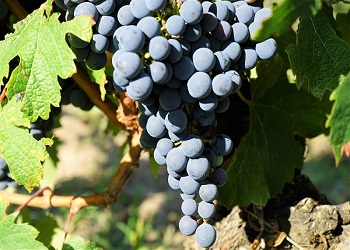
90% Tino Finto |
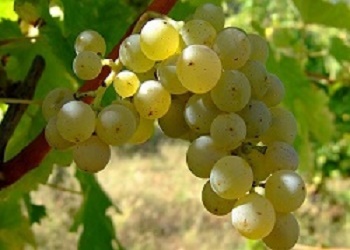
1% Albillo |
Soil | Climate |
|
Sand / Silt / Clay Topsoil. |
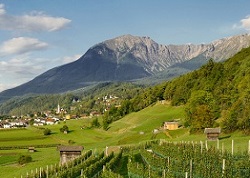
Hot and Dry Continental. |
DO Rueda (1980)
Vineyard area: 12 500 hectares.
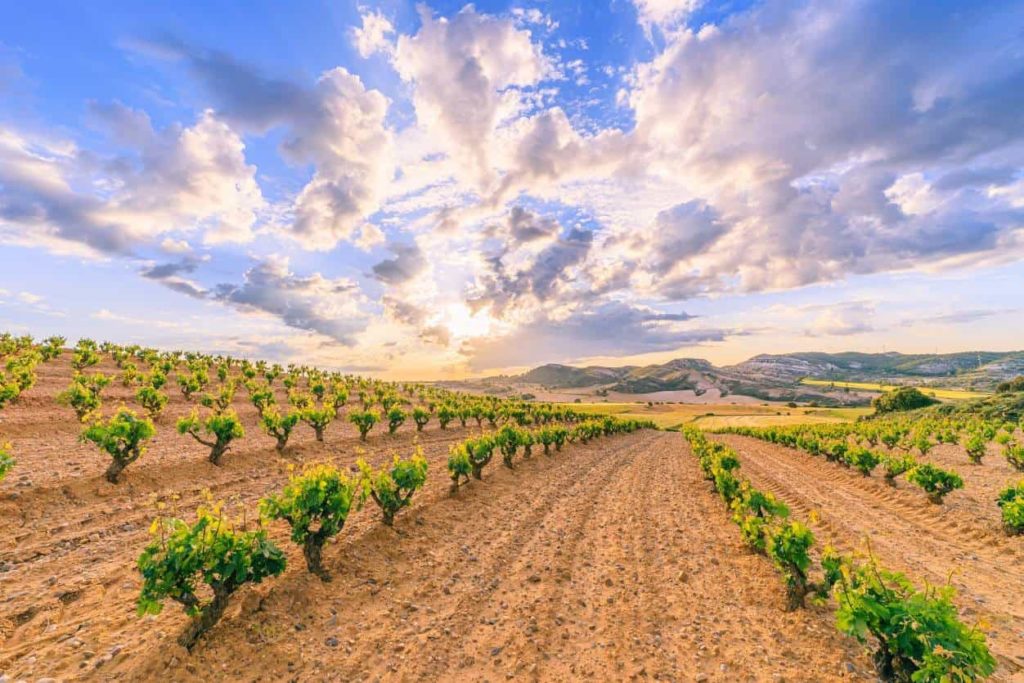
Rueda DO is located in the dry Castilla y Leon region.
The vines have to work hard to grow in Rueda, and you can taste it in the wines.
Irrigation is needed from the Duero River that flows through the area.
Wines labeled Rueda DO must contain 50% Verdejo blended with Sauvignon blanc or Macabeo.
Wines labeled "Rueda Verdejo" often contains 100% Verdejo.
The Rueda DO is centered around the town of Rueda, in the province of Valladolid. The land is a flat high plain at 600 to 800 metres (2,000 - 2600 ft) above sea level. This means there is a considerable difference between day and night temperatures.
Rueda DO Production 2020
| White | Black | Total |
|---|---|---|
| 110 500 000 kg | 1 210 000 kg | 111 710 000 kg |
Rueda DO Production History
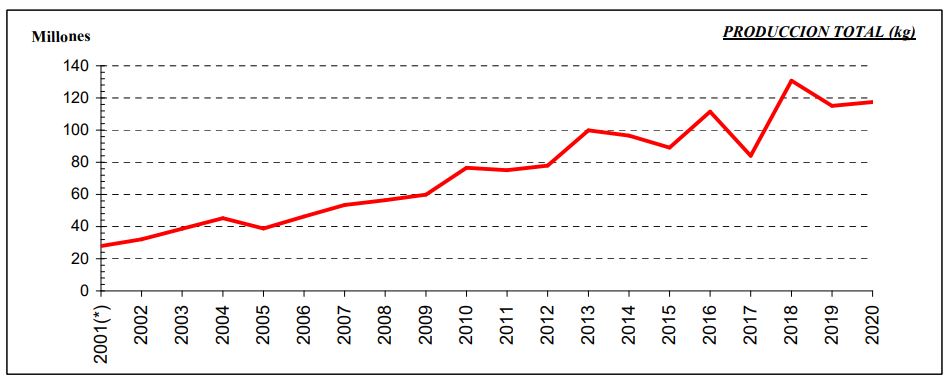
Black Grapes | White Grapes |

1% Tempranillo |

83% Verdejo |
Soil
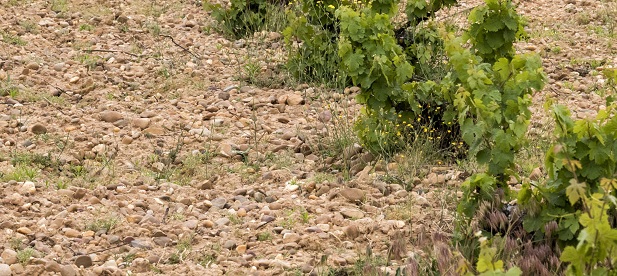
Gravelly.
Good Ventilation and Drainage.
Climate
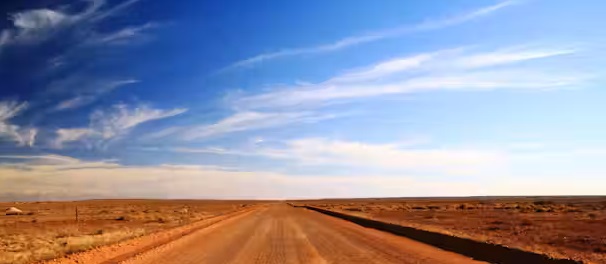
Hot and Dry Continental.
Abdundant Sunshine.
Low Rainfall.
High Altitudes:
600-800 m (2000-2600 ft)
High Diurnal Temperature Range.
Annual Temperatures:
–5° to 25°C
DO Toro (1987)
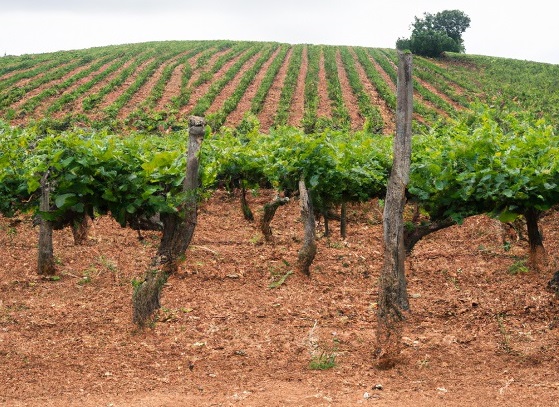
Toro DO is named after the city of Toro (bull). It is located in the dry Castilla y Leon region.
Due to high temperatures, abdundant sunshine and low rainfall the area produces strong, high-alcohol wines.
Toro is well-known for its powerful, full bodied red wines made from Tinta da Toro.
Irrigation is needed from the Duero River that flows through the area.
Tinta de Toro (Tempranillo) is the dominant grape.
Some Garnacha is grown for use in Toro Rosado.
Some Malvasia Blanca and Verdejo for use in Toro Blanco.
Black Grapes | White Grapes |

95% Tinta del Toro |

|
Soil

The soil is formed by sediments of sand, clays and lime-bearing puddingstone, which produce a dark lime-bearing topsoil, with fine and coarse sands.
Vineyard area: 5 600 hectares.
Climate

Extreme Continental Climate
Long, hot summers, cold winters.
Low Rainfall (350 mm/year).
Abdundant Sunshine (2.600 h/year).
Irrigation is needed from the Duero River.
Altitudes: 650-825 m.
Strong temperature variations.
–11 to +40°C (12-104°F)
DO Cigales (1991)
Vineyard area: 2 000 hectares.
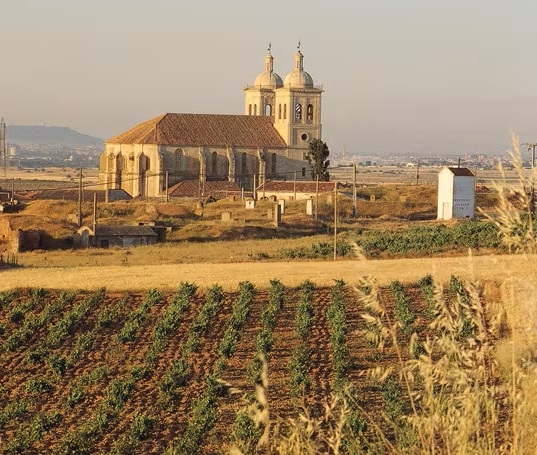
Cigales has long been associated with aromatic rosé wines.
After the area was granted DO status, producers began to show an interest in making red wines as well, following the example of other Duero valley DOs, and, above all, given the enormous potential of the region's reigning variety, Tempranillo, also known here as Tinta del País.

Cigales, just north of Ribera del Duero, is rapidly catching up with its larger neighbour.
Its old bush vines, rocky soils, and high elevation creates impressive wines with weight and finesse.
Black Grapes | White Grapes |

|

|
Soil
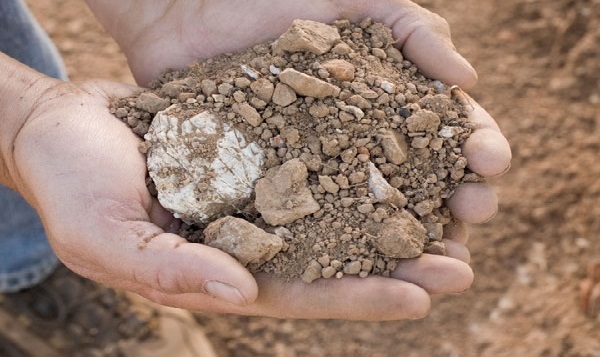
Light brown soil formed by lime-bearing sand and clay, on a subsoil of clay and marl.
The soil structure is granular, not very rocky and lacking organic material.
Climate
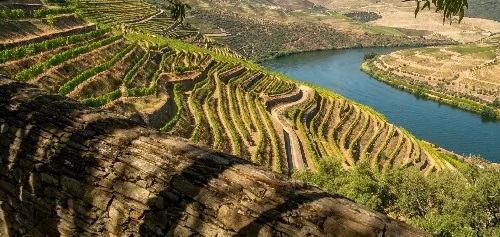
Continental.
Long hot summers. Cold winters.
Some Atlantic maritime influence.
Light Rainfall (425mm/ year).
Strong temperature variations.
0°C during winter and 40°C in summer.
Usually spring frost.
Alcohol can be addictive. Always drink in moderation.
© Copyright 2015-2025 W3 Wine School. All Rights Reserved.
